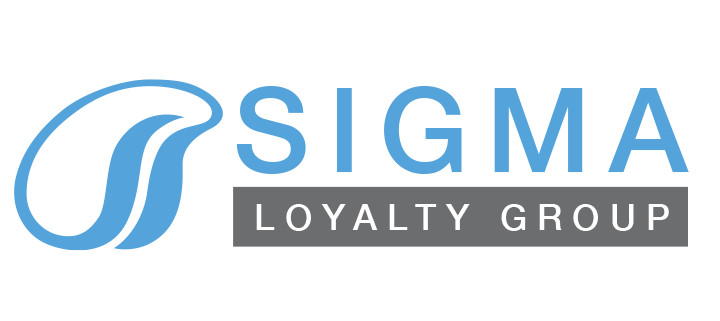
“The Optimus team brings exceptionally strong technical skills to the table. They can quickly troubleshoot problems and find solutions, all while keeping the project on track. Their project management processes enabled strong collaboration with our team, which was a big win internally. In the end, we had a seamless cutover to the Azure platform and believe that we have a future-proof infrastructure that will enable us to provide Tier 1 identity and information protection services to our clients.”
Shaibal Datta
Chief Information Officer, Sigma Loyalty Group
The Client
Sigma Loyalty Group provides enhancement services and solutions to the financial services, insurance, automotive, telecommunications, and retail industries. The Sigma solutions enhance consumer offerings with identity and information protection – building additional value into their client’s products and programs. Sigma clients are able to deepen relationships with their customers, drive customer loyalty, incent changes in consumer behavior, and create new revenue streams.
The Business Need
Now more than ever, personal and financial information and the sites and devices it’s stored on as we conduct daily activities, are at risk of being compromised. More and more, consumers are victims of a growing number of threats, and the need for security and consumer protection solutions has grown considerably.
As a provider of identity and information protection services, Sigma’s business has been in high demand and on a growth trajectory, but its inability to seamlessly scale and cost-effectively maintain its infrastructure and ecosystem was slowing them down.
The Challenge
With rapid growth came a number of challenges for Sigma.
- They had multiple on-premise applications and websites and were experiencing limitations with scalability, maintainability and cost-effectiveness.
- Because their services operated in an “always on” state, they needed to improve resilience and reliability across the board and have better disaster recovery options
- The growing load on their website and servers was leading to increased hardware cost
- Their servers were both self, and 3rd party managed, which left them with limited control over infrastructure operational efficiency
- From upgrades to storage to networking, Sigma needed an overall improvement in the manageability of their ecosystem
- The retail products required subscribers to use their credit cards, making it a key requirement with PCI compliance certification
- Finally, Sigma needed to modernize all of its services; from on-premise servers to the cloud, and from traditional applications to web apps
As costs associated with maintaining the existing infrastructure continued to rise, and because they experienced some third-party hosting issues, it became clear that it was time to make a change.
The Solution
Simply put, Sigma needed to modernize its infrastructure in a way that it could “stay modern”, seamlessly scale the overall ecosystem, and lower its total cost of ownership. After talking with a number of cloud providers like MS Azure, AWS and Google, their first choice was Microsoft, who then recommended Optimus to manage their digital transformation to the cloud.
Why Optimus:
Sigma already had a very strong technical in-house team and needed a partner who could match their level of expertise yet bring additional strengths and reliability to the table. It was paramount that the two teams collaborate seamlessly to design the system and solve problems along the way. The Optimus team proved to be all that and more.
According to Azhar Saleem, Senior Manager, IT Infrastructure and Security at Sigma Loyalty Group, “The Optimus team quickly grasped the complexities around the existing IT ecosystem with their on-premise virtual data centre, the PCI compliance infrastructure, and understood the exact tech stacks that needed migration. They understood the underlying network layers, firewalls and more, and were able to design a system that was very close to Sigma’s on-premise environment. Early meetings with the Optimus team showed us that they really understood the requirements, could easily adapt to Sigma’s team needs, had solid project management skills, and the ability to guide the Sigma team through any challenges that arose.”
The project success criteria were anchored around seamless migration, operations, applications, compatibility, and tech performance. There were several underlying components that had to be 100% compatible, including networking, file and database structures, secure communications, and compliance segregations, to name a few. The cutover had to be flawless.
The first step was to fully assess the current on-premise infrastructure. The Optimus team needed a holistic understanding of the infrastructure, how apps worked, deployments, resource identification, team dependencies, data flow, load projections, and optimal configuration of the cloud framework. From there, the teams collaborated on the design.
Why Azure:
Azure is a proven cloud platform in the Canadian financial industry, has the best security available, and is known for its stability and strength of resiliency. Sigma already had experience with Microsoft and Azure and was more comfortable with their technology from previous work with them and Redhat.
Sigma had previously modernized web apps on the Microsoft platform, were more comfortable using PIM (privilege identity management solutions), and the built-in security features in Active Directory was compatible with their products. On top of that, there were more cost efficiencies with Azure and their technical support, response times, and skill sets were second to none.
While the overall process for migrating to the cloud was fairly straightforward, the components involved in this particular project were very complicated. Highlights of Optimus’ work included:
- Managing all the dependencies and coordinating with stakeholders
- Lift and shift apps that didn’t have 1-1 mapping on Azure
- Configure and implement Azure Front Door as an additional gateway for authentication
- Help to design and manage the data sync strategy, including tool selection, proof of concept, and data migration (terabytes of data)
- Develop a backup and recovery plan
Once the cloud environment was designed and built, the teams began the testing phase.
According to Saleem, “There were a number of ‘gotchas’ along the way, but the Optimus team were able to quickly pivot, and problem solve to keep things moving forward, and still deliver on the timelines laid out in the beginning.”
The Results
The cutover to the cloud went as planned and was executed flawlessly on the first attempt. There was no downtime, PCI compliance was not affected in any way, and data integrity was maintained throughout the process.
Today, the Sigma technology team is experiencing a much higher level of comfort accessing and managing critical systems and managing the overall platform, and leadership is “sleeping a lot easier” knowing that they are more insulated against disruptions, downtime, and other impacts to service delivery. Other benefits from the digital transformation include:
- More credibility with new and existing clients as a result of the new platform
- Better conversations with auditors and other reviewers who could more easily understand and assess the ecosystem
- The architecture was kept the same for segregation, compliance and identity management
- Improved security throughout the infrastructure
- Availability increased to 99.99%
- Better failover ability for business continuity
Read this case study on the Microsoft website – Microsoft Customer Stories – Sigma Loyalty Group
Contact Optimus to learn how we can help you leverage cloud services.



